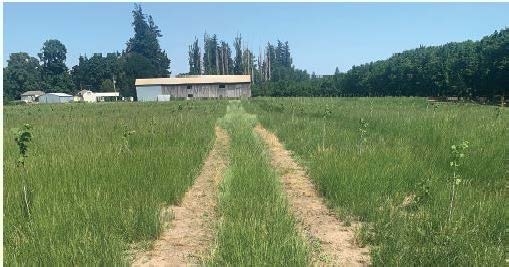From Page 13 of the Western Farm Press (May 2022) magazine
Electric weed control takes hold in orchards
By Lee Allen (Contributing writer)
Sometimes it takes a long time for an idea to be embraced by the public. Take electric weed control, a concept first patented in 1890, yet it hadn't received much attention until a few decades ago.
“Even if current ways still work, new ways are inevitable because they may be more cost-effective or perform a task faster, easier and better,” said Marcelo Moretti, weed specialist for Oregon State University Extension.
He addressed managing herbicide resistance with electric weed control. “Technology on many fronts is evolving so fast,” he said. “Perhaps EWC wasn't economically viable a couple of decades ago, but it could be today. Look at robots, for example. We're seeing increased mechanization everywhere.”
Weed resistance to agricultural herbicides is increasing. “We can delay that pushback, but the chemical we have previously used to control weeds can now have a non-chemical companion tool,” he said.
Calling herbicide resistance “a serious problem in both organic and conventionally grown crops” — in this case, tree nuts — Moretti believes thermal weed control via a tractor equipped with a generator, a transformer and an operator could save the day. And the operator may be superfluous with an autonomous tractor.
“EWC control appears to last longer because it kills weeds at the roots,” he said. “With mowing, you see regrowth in a week or two, and if there's a rainfall, all the weeds come back even quicker.”
While specifically researching weeds among hazelnut orchards in Oregon, “our findings could become a poster child for the entire tree nut industry,” Moretti said. “If EWC is safe enough for hazelnuts with their low-to-ground suckers, it's not hard to extrapolate to almonds, walnuts, pecans and pistachios, involving millions of acres plagued by weeds.”
CALIFORNIA CONNECTION
The Almond Board of California and the University of California, Davis, have already begun collaborating.
“I think the California tree nut industry would be a prime market for an EWC application because it is such a large portrait with flat ground and not a lot of debris that could be fuel for a fire,” Moretti said. “In a nut orchard, we could use larger tractors than we would use in vineyards.”
Moretti cited increasing interest in the concept. “More and more folks are looking at this as we find better ways to deal with human safety and cost reduction,” he said, adding it's a tool that will last multiple seasons with proper maintenance.
In an organic production weed control study using 5,000 to 12,000 volts on a 75-hp tractor, excellent efficacy was found with both annual and perennial weeds. “We're seeing better results than we expected with a tractor moving at 1½ mph through rye grass in a hazelnut orchard at a rough cost of $40 an acre, comparable to herbicide application costs,” he said. “EWC appears to be something that could be a gamechanger on chemical-resistant weeds.”
Original source: Page 13 of the Western Farm Press (May 2022) magazine
